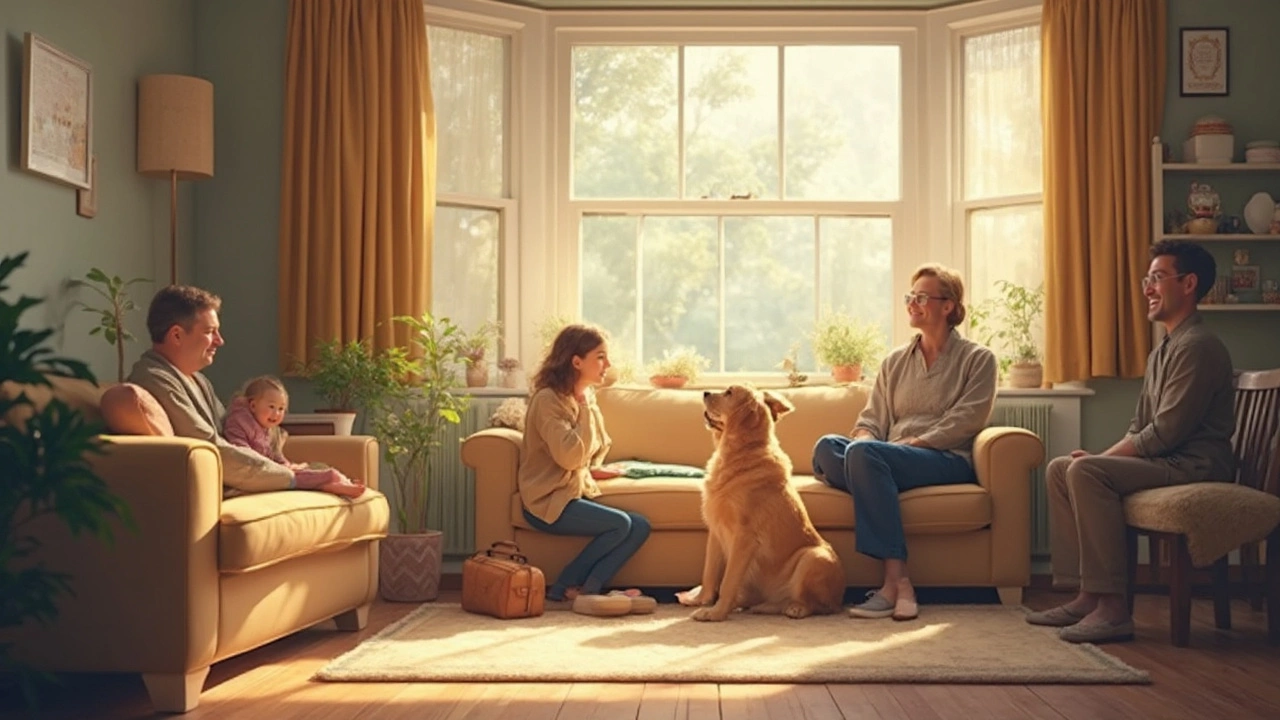So, your furry friend has a lot to say, and it's starting to drive you a bit bonkers, right? You're definitely not alone. Many dog lovers out there have faced this challenge. But here's the good news: you can teach your dog to bark less. Yep, even the most yappy pup can learn to chill.
First things first, dogs bark. It’s just what they do. It's their go-to for communication. They're like, "Hey, human, notice me!" or "Stranger danger!" But, yeah, I get it, endless barking can feel like a rock concert that never ends. Luckily, with the right mix of training and tools, you can bring peace back to your home.
Imagine this: understanding the reason behind the barking is step one. Is your dog bored? Hungry? Guarding the house? A little detective work can help figure out what's making your pooch so chatty, and then you can take appropriate action. Sometimes, it might just be a matter of distraction or giving them something else to focus on.
- Understanding Why Dogs Bark
- When Barking Becomes a Problem
- Effective Training Techniques
- Tools and Accessories That Help
- Consistency and Patience in Training
Understanding Why Dogs Bark
Alright, let's start with why your dog might be barking in the first place. Think of barking like chatting for dogs. It's their way of speaking to the world around them. Each woof can mean something different, depending on the situation and the dog’s personality.
Why do they bark? Well, it's usually a mix of instincts and learned behavior. Your dog might bark at you when they're hungry or need to go outside. If someone new is in their territory, they might start a chorus of barks to let you know there's something up.
Here are a few main reasons dogs bark:
- Attention Seeking: Your dog may crave your attention, and barking is their way of getting it. Maybe they need some playtime or a snuggle session.
- Alarm or Fear: When a stranger approaches, it's like your dog is saying, "Hey, what's going on here?" This is instinctual and tied to their protective nature.
- Boredom or Loneliness: Dogs are social animals, and without proper engagement, boredom can turn into barking. They're letting you know they're feeling lonely.
- Greeting or Excitement: Happy barks are a thing too! A dog might burst into a barking fit out of pure excitement, either when you're home after a long day or when they’re about to head out for a walk.
- Territorial Messaging: Your yard or living room is their kingdom. If an unfamiliar person or animal approaches, they alert you with barks. It’s how they protect their turf.
Now, in the scheme of things, understanding why your dog barks is a crucial step. It can help you address the underlying causes of excessive barking. Instead of just silencing them, it's about meeting their needs, whether it’s through more playtime or a bit of reassurance.
Interesting fact: According to some dog behavior studies, certain breeds are more prone to barking. Think Beagles or Terriers—they love a good vocal exercise! Knowing your breed’s traits can give you a head start.
When Barking Becomes a Problem
Alright, so your dog loves to bark. No big deal at first, right? But when does it cross over into "this is a problem" territory? Well, if you’re getting noise complaints from neighbors or you can't hold a phone conversation without yelling, yeah, it might be time to step in.
Excessive barking isn't just a headache for you; it can stress out your dog, too. Think of it this way: it's their way of saying something's off. Maybe they're anxious, bored, or super protective. Getting to the bottom of why they’re barking a lot is key. One interesting fact is that dogs bark more when they're alone. In New Zealand, a survey highlighted that over 40% of dog owners noticed their pets barking more during the first year when left by themselves.
Sometimes barking is a clear signal. If someone's at the door or they spot a squirrel, it's a call to action for them. But what if it's non-stop, even with no obvious trigger? That’s when you’ll want to pay attention.
In cases where dog barking gets in the way of peaceful living, it might also lead to more serious issues. Stress and a lack of socialization could be underlying reasons. Addressing these root causes can reduce the noise and lead to a happier pup. Let's not forget that mental stimulation can work wonders here. Dog toys, daily walks, or even learning new tricks can really channel all that energy into something productive. It's like hitting two birds with one stone—you get less barking, and they get more fun.
Dog collars also come into play. Some collars are designed to curb barking by giving those gentle nudges or tones to remind the dog to keep it down. If you're thinking about trying one out, make sure it fits your dog’s needs. Research before you buy, as one size doesn't fit all.

Effective Training Techniques
Alright, let's get into the nitty-gritty of teaching your dog how to dial down the barking. The key to success here is a mix of patience, consistency, and knowing when to reward good behavior.
Start by catching your dog in the act of barking and redirecting their attention. You can say something like, "Quiet," in a calm but firm voice. Then, as soon as they stop barking, even if it's just for a second, give them a treat. This helps them connect the dots that being quiet means good things come their way.
Repeating this step consistently makes it sink in. It's like teaching a toddler to say 'please' and 'thank you'—repetition is everything. Your dog won't get it right away, but they'll start to notice the pattern. Here are some structured steps to follow:
- Identify the Trigger: Pinpoint what sets off the barking. This might be a delivery person, another dog, or maybe the neighbor's cat.
- Use Basic Commands: Teach and reinforce simple commands like "quiet," "sit," or "stay." These commands serve as tools to redirect your dog's energy and focus.
- Practice Makes Perfect: Regularly practice these commands during controlled situations so they'll work under any condition.
- Reward Good Behavior: Remember, treats or affection are perfect ways to say, "Well done!" whenever your dog obeys the quiet command.
Now, if your dog is one of those types who barks at the drop of a hat, consider using distractions to break their focus. Toys, games, or even a quick walk can do wonders.
Another cool training tool is the dog collar. There are collars designed to give a gentle reminder, like a vibration or sound, to discourage barking. But fair warning: always do your research to ensure it's safe and humane.
Tools and Accessories That Help
When it comes to curbing that constant dog barking, sometimes a little help from tools and accessories can make all the difference. It's not just about telling your pup to hush—it’s about supporting their learning process with the right gadgets.
Let's start with dog collars. There are collars designed specifically to reduce barking. These are often called anti-bark collars and can come in a few different types. One popular option is the spray collar, which gives a harmless but surprising spray when your dog starts barking. The idea is to catch them off guard enough to stop the bark.
Then there are ultrasonic collars. These emit a high-pitched sound, undetectable to humans, which is another gentle way to discourage barking. It's like sending a quiet ‘knock it off’ to your pooch. Also worth considering are vibration collars, which simply vibrate when your dog barks. This is usually enough to distract dogs and help them associate the vibration with barking.
Let's talk about training devices. Handheld ultrasonic trainers can be super handy. These devices give you control to correct barking when it happens by emitting a sound that gets your pup's attention and can be used alongside verbal cues for effective training.
| Tool | Use |
|---|---|
| Spray Collar | Delivers a harmless spray to stop barking. |
| Ultrasonic Collar | Emits high-pitched sounds only dogs can hear. |
| Vibration Collar | Vibrates to interrupt barking. |
Don’t forget toys and distractions! Sometimes, a little entertainment is all they need. Puzzle toys or chew toys they really love can keep them busy and less prone to bark out of boredom.
Finally, there's tech you can use at home. Devices like automated noise machines or even smart home technology that plays music or sounds while you're away can help keep your furry friend calm.
Remember, these tools and accessories are just that—tools. Without consistent training and understanding of why your dog might be barking, these gadgets alone might not solve the barking issue. But in combination with a good training strategy, they can definitely help make a noticeable difference!

Consistency and Patience in Training
Alright, here's the scoop: training your dog to stop barking isn't something that happens with the snap of your fingers. It's all about sticking with it and having a little patience. Trust me, if you put in the effort, you'll see results.
Imagine this training like teaching a kid to ride a bike. You wouldn't expect them to nail it on day one, right? It's the same with your dog. You gotta keep at it and be consistent. That means using the same command every time. Some folks like the classic "quiet" or "enough." Pick one, and stick with it.
Now, let's talk boundaries. If you're okay with a bit of barking when someone's at the door, that's cool. Just make sure your dog knows when it's time to zip it. Consistent cues will help your dog understand where the line is.
Also, dogs love routine. They thrive on it. Try setting up regular training sessions. Keep them short and sweet – about 10-15 minutes – to keep your pup's attention sharp. Frequent practice strengthens the behavior you're after.
Here's something that's easy to overlook: rewarding good behavior. When your dog stops barking when you ask, celebrate it! Give them a treat, a chin scratch, or their favorite squeaky toy. Positive reinforcement lets them know they've done right.
And hey, let's be real. You might not have 24/7 to sit around training. Life gets busy! But even on hectic days, a few minutes here and there can make a big difference. The key is to keep that regularity, even if it's just a little each day.
To wrap it up, remember: changes won't happen overnight. It takes time, love, and a whole lot of patience. But hang in there. You and your dog will be barking experts in no time.
